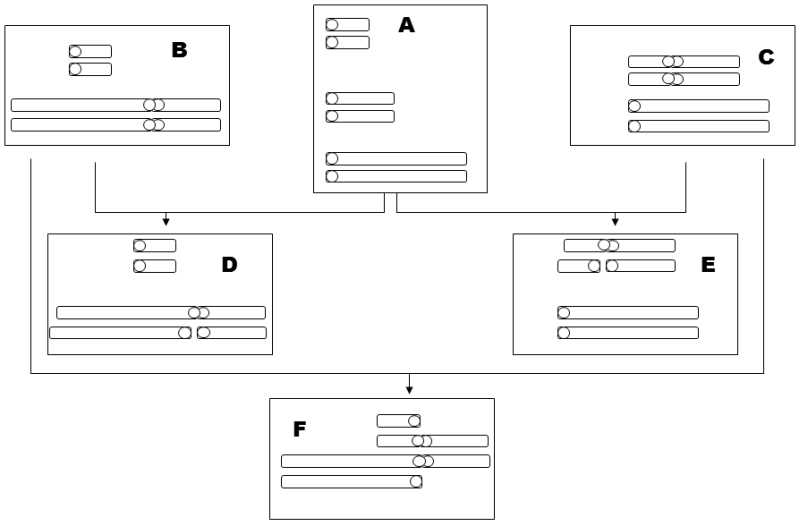XXI.5.1.1 Certain types of chromosomal speciations require involvement of several independent chromosomal mutations
Simple chromosome mutations very frequently spread in the population without their presence substantially affecting the fitness of their carriers. In fact, even heterozygote individuals, which frequently bear very drastic chromosomal mutations, frequently exhibit more or less the same fertility as homozygote individuals. In this case, a relatively large part of the population, usually in the territory where this mutation emerged, can exhibit the mutated karyotype. The territory in which this karyotype variant occurs can grow in time at the expense of the territory occupied by the original variant. In this case, karyotype variants are generally termed chromosome races. The members of new chromosome races freely cross with members of the original race and regular recombination occurs between their chromosomes. Although they differ in the chromosome number or morphology, they need not differ in the frequencies of the individual alleles on these chromosomes and therefore in their phenotype. However, if two different chromosome mutations spread simultaneously in the population, heterozygotes with reduced or even zero fertility can be formed at their site of contact. The chapter on meiotic drive (VI.3.5.1) described a case where two metacentric chromosomes with a single common arm formed by Robertson translocation, with participation by the same acrocentric chromosome in both cases, but in each case in combination with a different acrocentric chromosome, met at a certain place in the range of occurrence (Fig. XXI12). In this case, complicated multivalents are formed in meiosis, which can substantially disturb the course of reduction division. The infertility of these heterozygotes can result in the formation of a very effective reproductive barrier between these two chromosome races and the races can gradually differentiate into completely separated species.

Fig. XXI.12 Formation of tetravalents in hybrids with two Robertson translocations. If an individual with one Robertson translocation (B or C) crosses with an individual with the original karyotype (A), serious defects do not occur during meiosis (D, E), and thus aneuploid gametes are not formed. However, if two individuals carrying Robertson translocations with one common arm (B and C) cross, chromosome tetravalents (F) are formed during meiosis that, in some cases, prevent completion of meiosis and, in other cases, lead only to the formation of a large percentage of aneuploid gametes.
